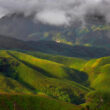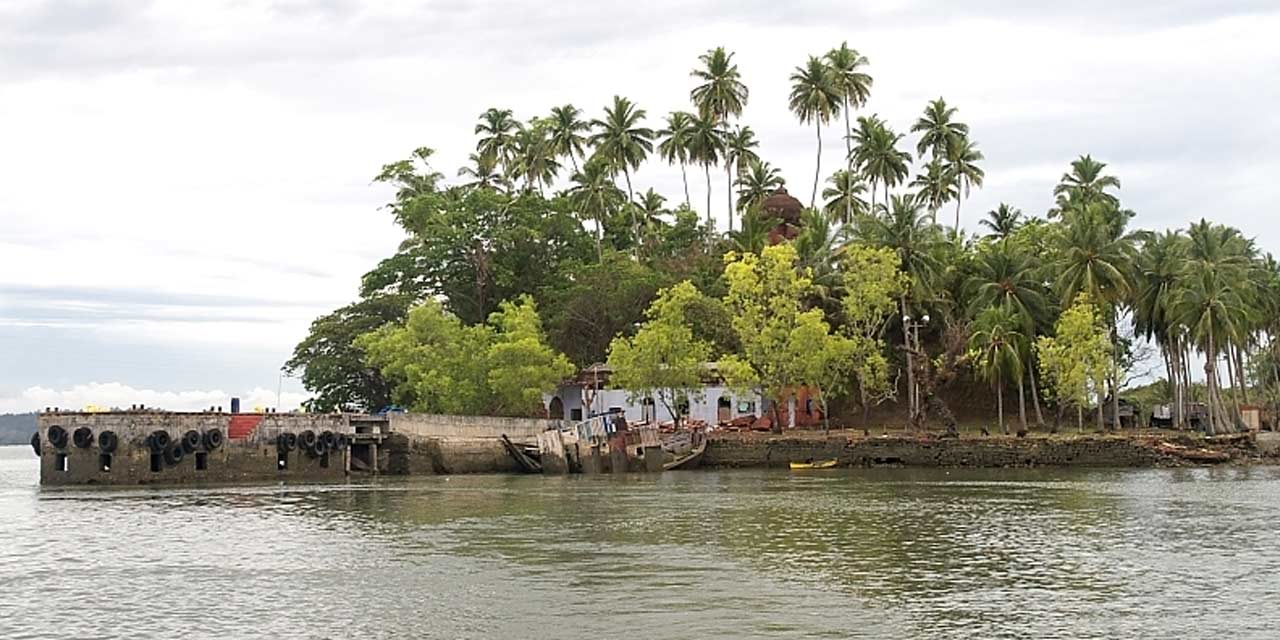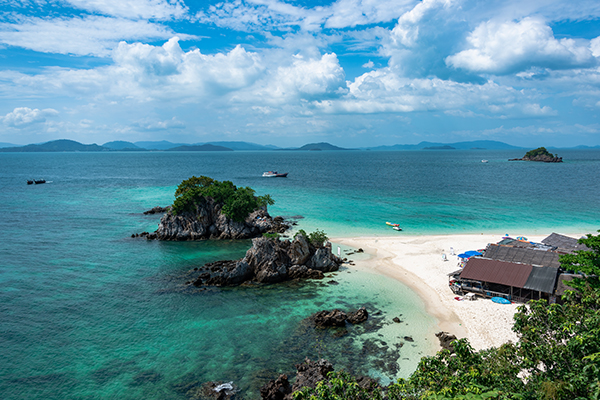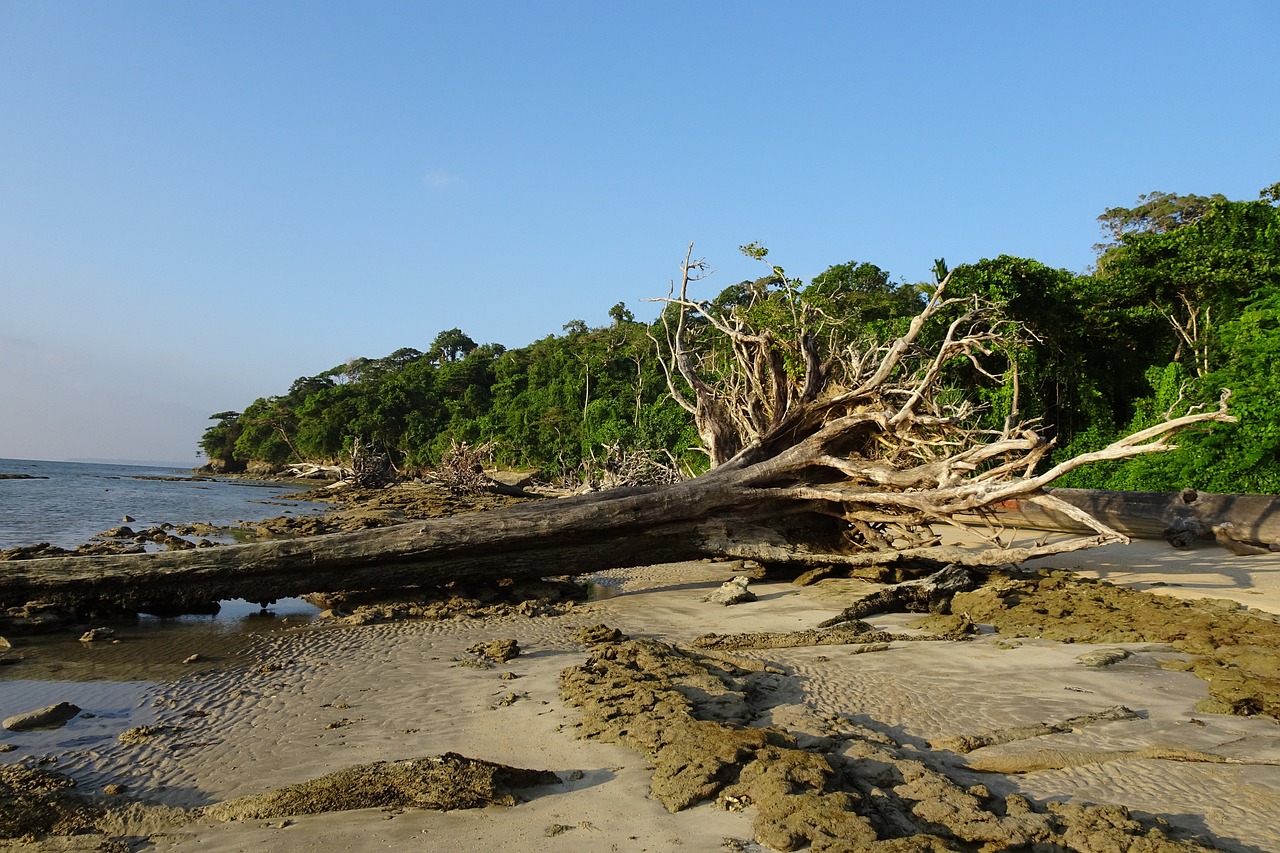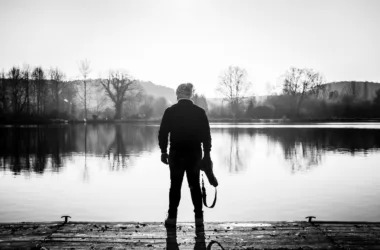Viper Island, located in the Andaman and Nicobar Islands of India, holds a dark and troubling history as a former British penal colony. The island, named after the venomous snakes that once inhabited it, served as a prison for Indian freedom fighters during the late 19th and early 20th centuries.
The island’s history as a penal colony begins in 1867 when the British established a jail on the island to house Indian convicts. However, the island’s true purpose as a prison for political prisoners would not begin until 1872, when the first group of freedom fighters was sent to the island. These prisoners, who were considered a threat to British rule in India, were subjected to inhumane conditions and brutal treatment at the hands of their captors.
One of the most notorious figures associated with Viper Island is James Pattison Walker, a British officer who served as the superintendent of the prison from 1879 to 1883. During his tenure, Walker was known for his sadistic methods of punishment, which included floggings and solitary confinement in dark, damp cells. He was also known to use the island’s venomous snakes as a means of punishment, forcing prisoners to handle them as a form of torture.
Despite the horrific conditions, many of the prisoners held on Viper Island continued to resist British rule and even staged protests and hunger strikes. However, their efforts were met with brutal retaliation, and many died as a result of the harsh treatment they received.
After India gained independence in 1947, the prison on Viper Island was closed, and the island was largely forgotten. Today, the island is a popular tourist destination, and visitors can explore the remains of the prison and learn about its dark history.
However, it’s important to remember the suffering of the prisoners who were held on the island and the sacrifices they made in the fight for Indian independence. The history of Viper Island serves as a powerful reminder of the atrocities committed in the name of colonialism and the resilience of the human spirit in the face of oppression.
History of Viper Island
Viper Island is a small island located in the Andaman and Nicobar Islands of India. The island has a dark history as a former British penal colony, where Indian freedom fighters were held during the late 19th and early 20th centuries.
The island’s history as a penal colony begins in 1867 when the British established a jail on the island to house Indian convicts. However, the island’s true purpose as a prison for political prisoners would not begin until 1872, when the first group of freedom fighters was sent to the island. These prisoners, who were considered a threat to British rule in India, were subjected to inhumane conditions and brutal treatment at the hands of their captors.
One of the most notorious figures associated with Viper Island is James Pattison Walker, a British officer who served as the superintendent of the prison from 1879 to 1883. During his tenure, Walker was known for his sadistic methods of punishment, which included floggings and solitary confinement in dark, damp cells. He was also known to use the island’s venomous snakes as a means of punishment, forcing prisoners to handle them as a form of torture.
Despite the horrific conditions, many of the prisoners held on Viper Island continued to resist British rule and even staged protests and hunger strikes. However, their efforts were met with brutal retaliation, and many died as a result of the harsh treatment they received.
After India gained independence in 1947, the prison on Viper Island was closed, and the island was largely forgotten. Today, the island is a popular tourist destination, and visitors can explore the remains of the prison and learn about its dark history.
It’s important to note that the island was also used as a place of exile for Indian Princes, some of them were exiled for political reasons, and others were exiled for other reasons, such as being a threat to the British Raj or to their own kingdoms.
The history of Viper Island is a powerful reminder of the atrocities committed in the name of colonialism and the resilience of the human spirit in the face of oppression. It serves as a testament to the sacrifices made by those who fought for Indian independence and the importance of remembering and honoring their legacy.
Facts about Viper Island
- Viper Island is located in the Andaman and Nicobar Islands of India.
- The island served as a British penal colony from 1867 to 1947, where Indian freedom fighters were held during the late 19th and early 20th centuries.
- The island was named after the venomous snakes that once inhabited it.
- The first group of freedom fighters was sent to the island in 1872.
- The most notorious figure associated with Viper Island is James Pattison Walker, a British officer who served as the superintendent of the prison from 1879 to 1883, and was known for his sadistic methods of punishment.
- Many prisoners held on Viper Island staged protests and hunger strikes, but their efforts were met with brutal retaliation.
- After India gained independence in 1947, the prison on Viper Island was closed and the island was largely forgotten.
- Today, the island is a popular tourist destination, and visitors can explore the remains of the prison and learn about its dark history.
- The island was also used as a place of exile for Indian Princes, some of them were exiled for political reasons, and others were exiled for other reasons, such as being a threat to the British Raj or to their own kingdoms.
- The history of Viper Island serves as a powerful reminder of the atrocities committed in the name of colonialism and the resilience of the human spirit in the face of oppression.
Things to do at Viper Island
- Visit the remains of the prison: Visitors can explore the remains of the prison on Viper Island, including the cells and the gallows, and learn about the dark history of the island as a British penal colony.
- Take a guided tour: Guided tours are available on the island and can provide visitors with a more in-depth understanding of the island’s history and the experiences of the prisoners who were held there.
- Learn about the island’s flora and fauna: Viper Island is home to a diverse range of plant and animal life, and visitors can take nature walks to learn about the island’s ecosystem and spot different species of birds and animals.
- Visit the lighthouse: The island has a lighthouse that is still in use and can be visited. The lighthouse is an interesting place to visit because of its architectural design and the scenic view from the top.
- Relax on the beach: Visitors can also take some time to relax on the island’s beautiful beaches, go for a swim, or indulge in water activities like snorkeling, scuba diving, or kayaking.
- Visit the Martyr’s Memorial: There is a Martyr’s Memorial on the island that honors the freedom fighters who were held and died on the island, it’s a good place to pay respect and reflect.
- Take a boat trip: Visitors can also take a boat trip around the island and enjoy the scenic views of the surrounding area.
- Visit the Cellular Jail National Memorial: Located on the Port Blair, the Cellular Jail National Memorial is a must-visit for those interested in the island’s history. The memorial is dedicated to the freedom fighters who were held in the Cellular Jail and offers a glimpse into the lives of the prisoners who were held there.
- Visit the Museum of Andaman: Located in Port Blair, the Museum of Andaman is a great place to learn about the history and culture of the Andaman and Nicobar Islands.
It’s important to keep in mind that some activities might not be available all year round due to the weather conditions, and some of them might require a permit.
How to reach Viper Island
Viper Island is located in the Andaman and Nicobar Islands of India, and there are a few ways to reach the island:
- By Air: The nearest airport is Veer Savarkar International Airport in Port Blair, which is well connected to major cities in India. From there, visitors can take a ferry or a speedboat to reach Viper Island.
- By Sea: Visitors can also reach Viper Island by taking a ferry or a speedboat from Port Blair. The journey takes around 30 minutes and the frequency of the service might vary depending on the season.
- By Road: Visitors can also reach Port Blair by road but this option is only available for Indian citizens and requires a permit.
It’s important to note that the island is only open to visitors from October to May, and the number of visitors is restricted to maintain the ecological balance of the island, so it’s advisable to book a trip in advance. Also, the island is closed during the monsoon season, and the ferries and speedboats are not operational. It’s also recommended to check the weather forecast and plan accordingly, as the weather can be unpredictable and might affect travel plans.
Light and Sound show at Viper Island
Viper Island is known for its dark history as a British penal colony, and to commemorate the struggles of the freedom fighters who were held there, a light and sound show is organized on the island. The show is held in the evening, and visitors can witness the history of the island and the struggles of the freedom fighters through a series of light and sound effects.
The show takes visitors through the history of the island, starting with the arrival of the first freedom fighters, and the brutal treatment they received at the hands of the British. The show also highlights the protests and hunger strikes that were staged by the prisoners, and the sacrifices they made for the independence of India.
The show also features the personal stories of some of the famous freedom fighters who were held on the island, and the struggles they faced during their time in prison. The show is usually performed in Hindi, but sometimes English is also used.
The light and sound show is an opportunity to learn more about the history of the island and to reflect on the sacrifices made by the freedom fighters. It’s an emotional experience that allows visitors to connect with the past and understand the struggles of those who fought for India’s independence.
It’s important to note that the show might not be available all year round, and the schedules might vary, it’s advisable to check the availability and schedule in advance, and also book the tickets early, as the number of visitors is restricted to maintain the ecological balance of the island.
Best time to visit Viper Island
The best time to visit Viper Island is from October to May. During this period, the island is open to visitors and the weather is generally pleasant, with low humidity and moderate temperatures. This time of the year is considered the peak tourist season and it’s when the island is most accessible, with more frequent ferries and speedboat services.
From June to September, the island is closed to visitors, as it is the monsoon season, and the ferries and speedboats are not operational. The heavy rains can make the island inaccessible, and the weather can be unpredictable and dangerous.
It’s also important to keep in mind that the number of visitors is restricted to maintain the ecological balance of the island, and the tickets for the ferry or speedboat service, as well as the visit the island, should be booked in advance.
Also, the Light and Sound show that is organized on the island might not be available all year round, and the schedules might vary, so it’s advisable to check the availability and schedule in advance, and also book the tickets early, as the number of visitors is restricted to maintain the ecological balance of the island.
Overall, the best time to visit Viper Island is between October and May when the island is open to visitors and the weather is ideal for exploring and enjoying the island’s natural beauty, culture, and history.
Similar Article
Frequently Asked Questions About Viper Island
Q: Is Viper Island open to visitors all year round?
A: No, Viper Island is only open to visitors from October to May. The island is closed during the monsoon season, which is from June to September, and the ferries and speedboats are not operational during this time.
Q: How long does it take to get to Viper Island from Port Blair?
A: The journey from Port Blair to Viper Island takes around 30 minutes by ferry or speedboat.
Q: Is it necessary to book tickets in advance for a visit to Viper Island?
A: Yes, it is recommended to book tickets in advance for a visit to Viper Island. The number of visitors is restricted to maintain the ecological balance of the island, and the tickets for the ferry or speedboat service, as well as the visit the island, should be booked in advance.
Q: Are there any guided tours available on Viper Island?
A: Yes, guided tours are available on the island and can provide visitors with a more in-depth understanding of the island’s history and the experiences of the prisoners who were held there.
Q: Are there any accommodations available on Viper Island?
A: No, there are no accommodations available on Viper Island. Visitors can stay in Port Blair and take a day trip to the island.
Q: What is the Light and Sound Show at Viper Island?
A: The Light and Sound Show is an evening event that takes visitors through the history of the island and the struggles of the freedom fighters through a series of light and sound effects. The show is usually performed in Hindi, but sometimes English is also used.
Q: What is the best time to visit Viper Island?
A: The best time to visit Viper Island is from October to May. During this period, the island is open to visitors and the weather is generally pleasant, with low humidity and moderate temperatures. This time of the year is considered the peak tourist season and it’s when the island is most accessible, with more frequent ferries and speedboat services.


